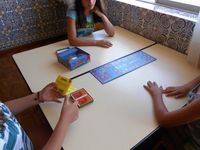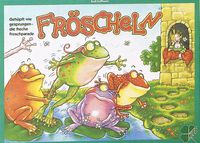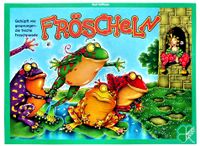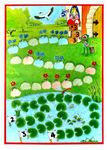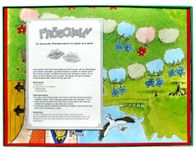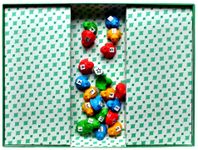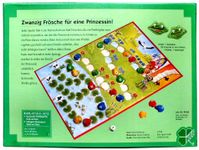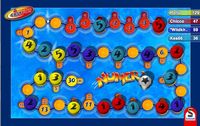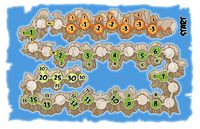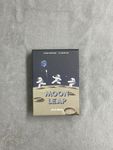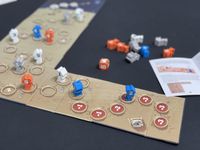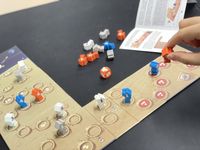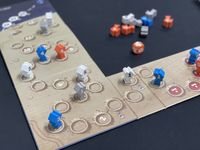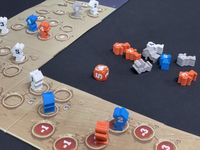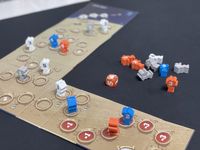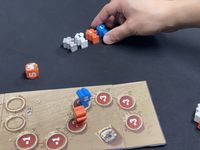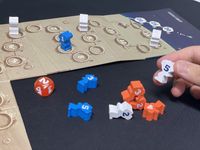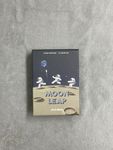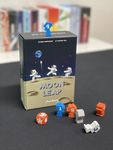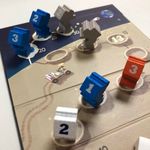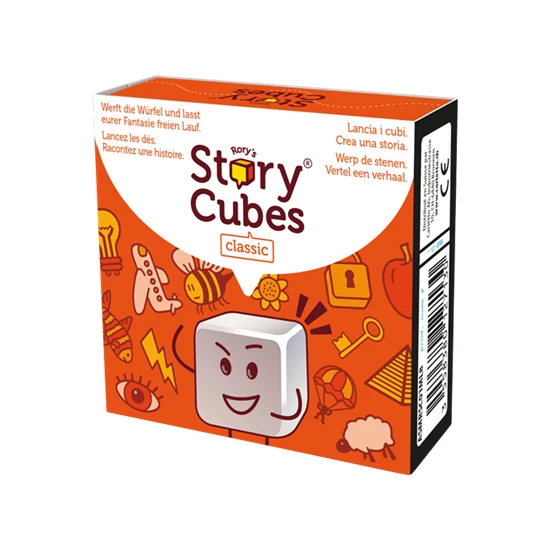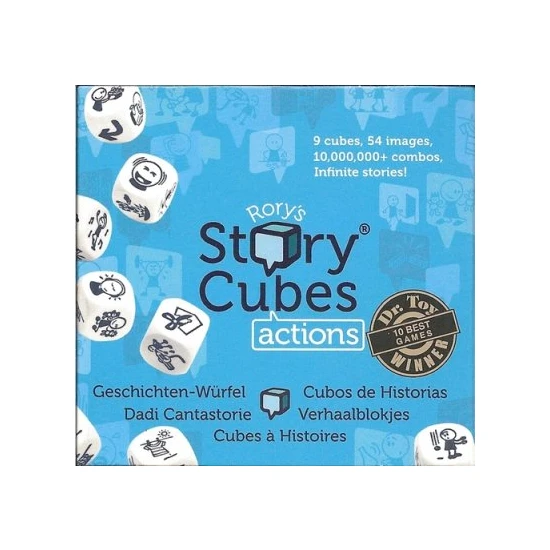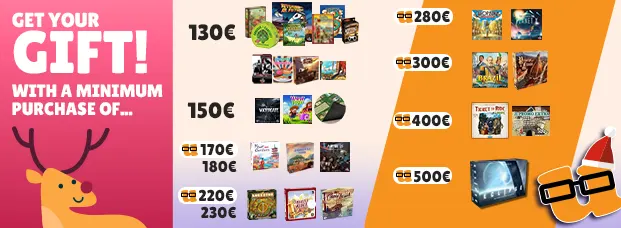

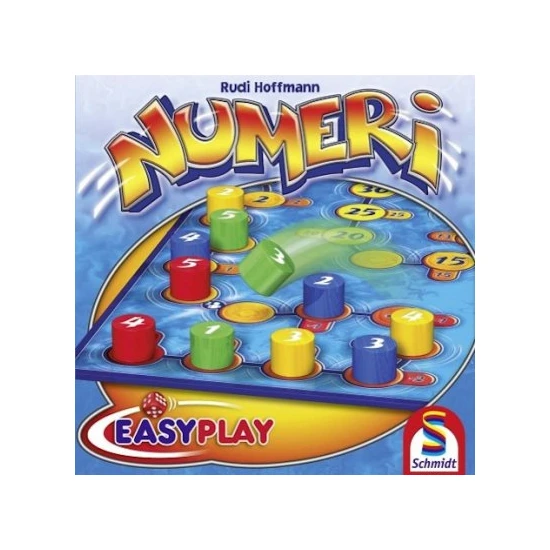
|
|
|
|
2-4
30'
7
No necessary in-game text
|
Numeri

Each player receives five figures of the same color, numbered from 1 to 5. A player rolls the dice and then may move figures that correspond to the total of the dice, e.g. rolling a 5 allows a player to move the 5 piece, or the 2 and the 3. The pieces are always moved to the next free space that is available on the board. If the player succeeds in making a chain of 3 or more pawns, he or she may roll the dice again. The game is finished when the last three, specially-marked squares are occupied. Each player receives the number of points achieved by multiplying the number of the square by the number of the occupying pawn. Summary * roll d6; may move your matching-numbered token (* is wild but moves only one token) * move it to the next free space on the track * after any player's token has crossed a line (varies with number of players playing), rolls of 3 4 or 5 may be split between 2 of your tokens (3->1-2, 4->1-3, 5->1-4 or 2-3), but only if you can move both the other tokens * if, with your move, you create 3 adjacent tokens of your color, go again (may do it repeatedly) * game ends when last 3 spaces of the track are occupied * final scores (for each token): o (token number) x (number on that token's space) o the multiplier for tokens never played to the board is -5 o highest sum wins The original version of the same-named game provided players with six tokens, and had different rules for gaining points from the board spaces. Re-implements: Numeri
| Mechanics: | Dice Rolling Roll and Move |
| Categories: | Dice Racing |
| Alternative names: | Fröscheln Numeri Fröscheln Moon Leap Numeri |
| BARCODE: | 4001504490072 |
| In 1 collection This was seen 6652 times | |
Each player receives five figures of the same color, numbered from 1 to 5. A player rolls the dice and then may move figures that correspond to the total of the dice, e.g. rolling a 5 allows a player to move the 5 piece, or the 2 and the 3. The pieces are always moved to the next free space that is available on the board. If the player succeeds in making a chain of 3 or more pawns, he or she may roll the dice again. The game is finished when the last three, specially-marked squares are occupied. Each player receives the number of points achieved by multiplying the number of the square by the number of the occupying pawn. Summary * roll d6; may move your matching-numbered token (* is wild but moves only one token) * move it to the next free space on the track * after any player's token has crossed a line (varies with number of players playing), rolls of 3 4 or 5 may be split between 2 of your tokens (3->1-2, 4->1-3, 5->1-4 or 2-3), but only if you can move both the other tokens * if, with your move, you create 3 adjacent tokens of your color, go again (may do it repeatedly) * game ends when last 3 spaces of the track are occupied * final scores (for each token): o (token number) x (number on that token's space) o the multiplier for tokens never played to the board is -5 o highest sum wins The original version of the same-named game provided players with six tokens, and had different rules for gaining points from the board spaces. Re-implements: Numeri
| Mechanics: | Dice Rolling Roll and Move |
| Categories: | Dice Racing |
| Alternative names: | Fröscheln Numeri Fröscheln Moon Leap Numeri |
| BARCODE: | 4001504490072 |
| In 1 collection This was seen 6652 times | |








